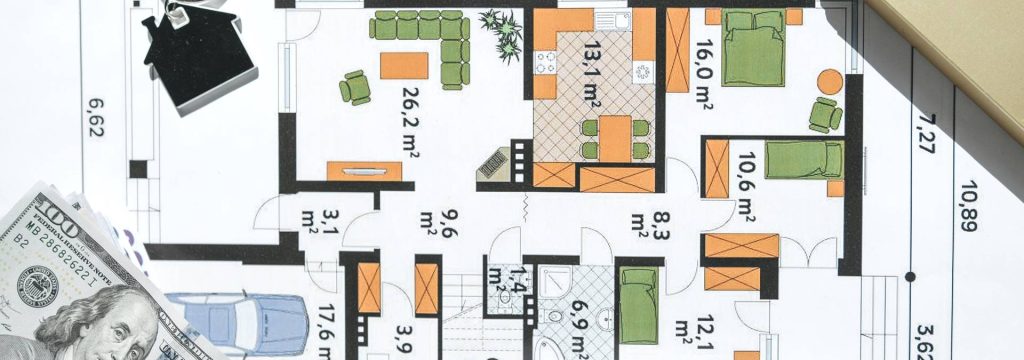The Rise of Residential Conversions
A growing number of investors and luxury homeowners are finding that the most valuable opportunity might already be sitting beneath their roof. In today’s market, where borrowing costs are high and housing demand continues to evolve, converting large single-family homes into multi-unit rentals or co-living spaces is no longer a fringe strategy. It’s a smart, equity-driven move designed to generate stronger income from the same physical footprint.
Whether it’s a family estate in a prime neighborhood, a high-end property with excess square footage, or a vacant luxury home that no longer fits a lifestyle, more owners are asking the same question. What if this property could work harder? And in many cases, it can.
The Shift in Housing Demand
The traditional model of one family per home is changing. Young professionals, remote workers, retirees, and even multi-generational households are looking for more flexible and affordable living arrangements in desirable neighborhoods. This has opened the door to co-living setups, accessory dwelling units (ADUs), and high-end rentals carved out of once single-use homes.
In major metro areas and lifestyle markets alike, the appetite for high-quality rentals remains strong. The challenge is supply. Local zoning often restricts the construction of new multi-family units. But conversions offer a way to work within the system while meeting real housing needs. Investors and homeowners who understand how to navigate these changes are now unlocking real value, sometimes doubling or even tripling their income potential from a single asset.
Equity as a Tool, Not Just a Number
High-end properties tend to sit on significant equity. Rather than leaving that wealth dormant, many are choosing to redeploy it into strategic renovations and improvements that allow for reconfiguration of the home’s layout. In some cases, it’s a detached guest house that gets a full kitchen and private entrance. In others, it’s a wing of the home that’s converted into a luxury rental unit, complete with its own amenities.
The result is not just more income. It’s often higher occupancy, better asset utilization, and increased property value. And because these conversions are typically made with an eye toward quality, they tend to attract discerning tenants who are willing to pay a premium for location, design, and privacy.
This isn’t about squeezing people into tight quarters. Done correctly, co-living or multi-unit designs can enhance livability. Shared spaces are elevated, private areas are thoughtfully planned, and the entire home operates more efficiently.

Co-Living: A Lifestyle, Not a Compromise
The concept of co-living has matured. What once felt like a student-housing solution has evolved into a lifestyle choice for professionals seeking community, convenience, and affordability. Luxury co-living spaces now include private bedrooms with en suite baths, shared chef’s kitchens, curated design elements, and on-site amenities such as fitness rooms or home theaters.
For investors, this trend offers a compelling return profile. A five-bedroom home that might rent to one family for $8,000 a month could potentially generate $12,000 or more when restructured into a co-living model, with each tenant paying for a private room and shared use of premium common areas.
More importantly, the demand is durable. As housing prices remain high and interest rates weigh on buying decisions, more individuals are opting to rent longer. And they’re willing to pay well for something that feels like a step up, not a step down.
Navigating the Regulatory Landscape
Of course, any conversion requires a thoughtful approach. Zoning rules, permitting processes, and neighborhood regulations vary widely by city and county. It’s critical to work with professionals who understand how to structure a compliant project from the start.
In some areas, local governments are embracing ADUs and conversions as part of their affordable housing strategies. In others, the path may be more complex but still achievable with the right guidance. Either way, it’s essential to plan ahead, budget appropriately, and avoid shortcuts.
That said, the regulatory hurdles are not necessarily a deterrent. In fact, they can serve as a barrier to entry, helping protect the value of these types of investments once executed properly.
From Passive Ownership to Active Strategy
For luxury homeowners who no longer use their entire property, conversion presents a way to hold onto a beloved asset while making it financially productive. For example, empty nesters might transform a wing of their estate into a self-contained rental for traveling nurses, executives, or extended family. This allows for income, flexibility, and control – all without selling or downsizing.
Investors, meanwhile, are actively acquiring large single-family homes with conversion in mind from the outset. They see beyond the listing photos and square footage, focusing instead on ceiling height, plumbing access, and entry points. They’re thinking like operators, not just owners.
This shift in mindset is part of a broader movement: one where real estate is no longer treated as a fixed asset, but as a platform for adaptability and income generation.
A Future-Proofed Play
What makes property conversions so appealing today is their ability to adapt with time. A home reimagined as a co-living space today can be returned to a single-family layout tomorrow. An ADU built now can serve as rental income today, guest quarters next year, and aging-in-place housing later on.
This built-in flexibility adds value, both financially and functionally. And as the real estate landscape continues to evolve, those who have prepared their properties for multiple uses will be in the best position to respond.
The bottom line is simple. Whether you are sitting on unused space or evaluating a potential acquisition, don’t overlook what’s already within the walls. With a bit of vision, creative planning, and the right support, that square footage can be transformed into long-term value—and steady income.
